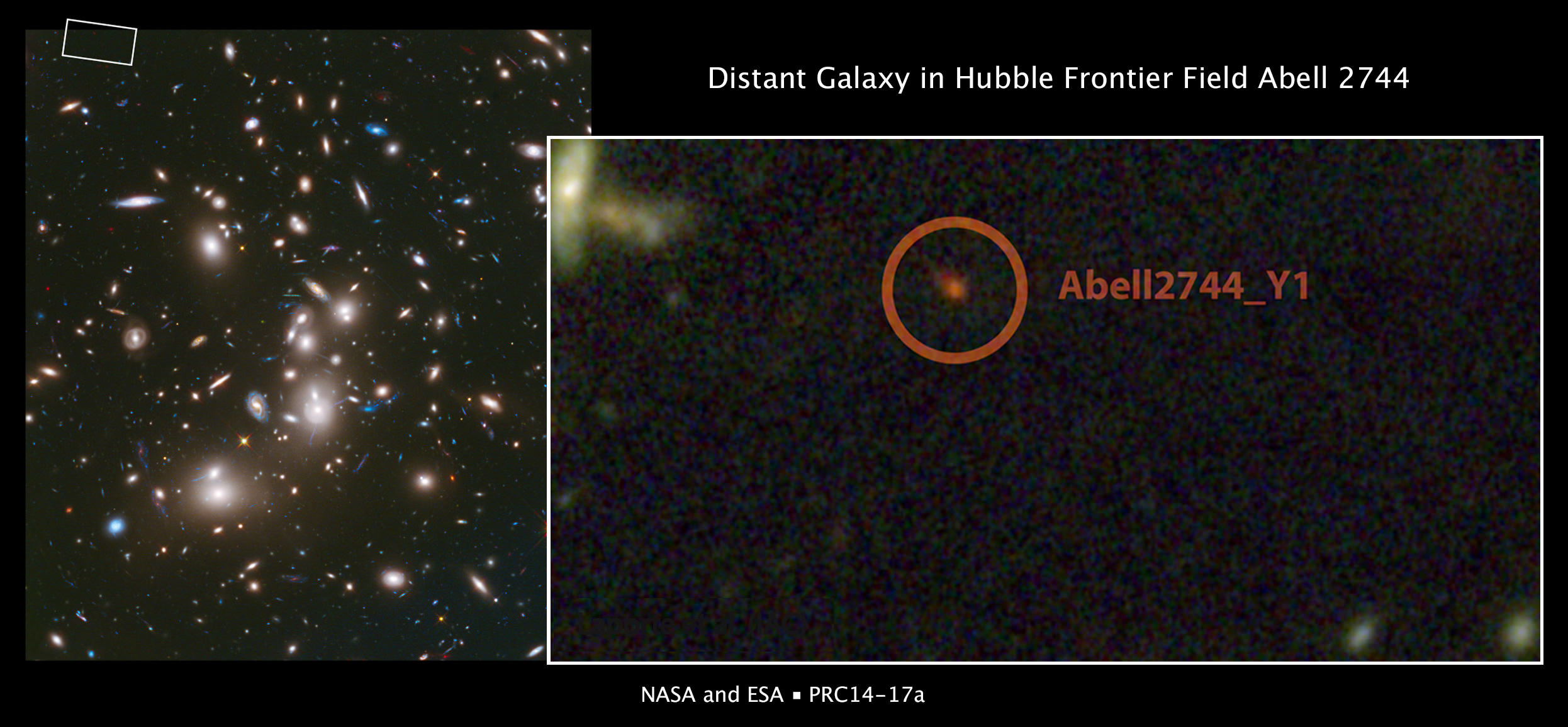Peering deep into the universe with the Hubble Space Telescope, a team of researchers have found an extremely distant galaxy. It was discovered in Abell 2744, a galaxy cluster. The galaxy (called Abell2744_Y1) was spotted at a time when it was just 650 million years after the universe-forming Big Bang (which makes it more than 13 billion years old).
This demonstrates the potential of a relatively new project, researchers said, called “Hubble Frontier Fields.” It’s part of an effort where Hubble and fellow NASA space telescopes Spitzer and the Chandra X-ray Observatory will examine six galaxy clusters that bend the light from more distant objects in the background. By doing this, researchers hope to learn more about galaxies formed in the universe’s first billion years.
“We expected to find very distant galaxies close to the cluster core, where the light amplification is maximum. However, this galaxy is very close to the edge of the Hubble image where the light is not strongly amplified,” stated Nicolas Laporte, a post-doctoral researcher at the Institute of Astrophysics of the Canary Islands (Instituto de Astrofisica de Canarias) who led the study.
“We are really lucky that we could find it in the small field of view of Hubble. In a related study led by Hakim Atek … more galaxies are analyzed but none is more distant than Abell2744_Y1.”
You can read the study in the journal Astronomy and Astrophysics Letters or in preprint version on Arxiv.
Source: Space Telescope Science Institute and Institute of Astrophysics of the Canary Islands

